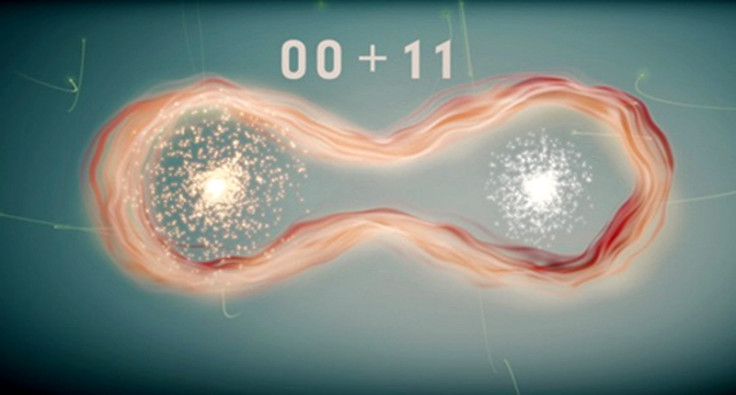Quantum computing breakthrough: UK scientists develop technique to greatly simplify trapped ions
University of Sussex physicists have found a new way to create quantum gates – apply voltage to microchips.
Physicists from the University of Sussex have developed a groundbreaking new technique that makes it much simpler to build large-scale trapped ion quantum computers, bringing us one big step closer to making quantum computers a reality in the near future.
Although currently, quantum computers are merely a concept, numerous computer science researchers around the world and billions of dollars have been invested to create them, and it is believed that these new super-powerful computers will be available within the next 50 years.
Currently researchers around the world are building quantum computer systems either using trapped ions and atoms; particles of light; or superconducting circuits that act as qubits (a technique being researched by IBM).
To develop a quantum computer that makes use of trapped ions, the current method involves using laser beams to build quantum gates.
This is fine if you're building a small quantum computer that consists of only a few qubits. But, if you want to create a true quantum computer capable of computing a huge equation, then you will require a quantum computer consisting of billions of qubits, which would require a system whereby billions of laser beams are all accurately aligned to 5μm in order to build all the requisite quantum gates.

This is incredibly hard to do, which is why we don't yet have quantum computers. But now, University of Sussex researchers have developed a method to greatly simplify trapped ion quantum computers – instead of using laser beams, they invented a method where voltages are applied to a microchip in order to build quantum gates, which is a much simpler method.
"We've reduced the difficulty of building a quantum computer to the equivalent of building a classical computer. In a classical computer, you have transistors and they apply voltage to execute a classical logic gate," Winfried Hensinger, professor of quantum technologies at the University of Sussex's Ion Quantum Technology Group, told IBTimes UK.
"We use microwave radiation, bathe the entire quantum computer in microwaves, then we have local magnetic field gradients within the actual processing zones, and by applying a voltage, we shift the position of the ion so it either interacts with the global microwaves or not."
The research, entitled "Trapped-Ion Quantum Logic with Global Radiation Fields" is published in the journal Physical Review Letters.
A much easier way to build quantum gates
How does quantum computing work?

Computers today are coded using traditional bits, which is the small unit of data that usually has a single binary value of 0 or 1. When put together, the bits create code words such as 00, 01, 10 or 11 that can be used to programme the computer to perform specific commands.
However, in quantum computing, bits can be in superposition known as 'qubits', so they can have the value of 1 and 0 at the same time, so code words could be much wider, for example, code words like 00+11, 00-11, 01+10 or 01-10.
The typical way of building a quantum computer at the moment is to create a system that has a large number of qubits – let's say 20 – and then build logic gates where the qubits can communicate with each other and carry out controlled swaps of bits in order to factor impossibly large numbers.
To build a quantum gate, quantum entanglement of two qubits is required, whereby two particles are able to stay connected and a single action on one particle affects the other, even if the two particles are located far apart from each other.
If you wanted to build a quantum gate, you would need the trapped ions to stay resonant, but if you just wanted one qubit on its own, then you would want the option to be able to shift the position of the ion so that it doesn't interact with the global microwave field, and this is what the scientists have been able to achieve.
The University of Sussex is part of the Networked Quantum Information Technologies Hub (NQIT), funded by the UK government, to establish a quantum technology industry in Britain.
The eventual aim is to build two large-scale quantum computing demonstrators – one at the University of Oxford, and one at Sussex.
So far, in research done on both superconducting qubit and trapped ion quantum computers, the maximum number of qubits achieved by scientists is about 10 qubits.
In contrast, the current quantum computer built by the University of Sussex researchers in their laboratory has two qubits, but the next demonstrator will have tens of qubits, and will hopefully be ready in the next three to four years.
"The difficulty in engineering a large-scale machine is drastically reduced. For the first time, you can carry out quantum gates on a trapped ion quantum computer just using voltages," said Hensinger, who personally believes that trapped ions will win the quantum computing race much faster than superconducting circuits.
"This really changes entirely how you would build a trapped ion quantum computer, it's like going from a feature phone to a smartphone. The key advantage is the ability to engineer a machine with billions and billions of quantum bits, that's now feasible with current technology."
© Copyright IBTimes 2025. All rights reserved.






















